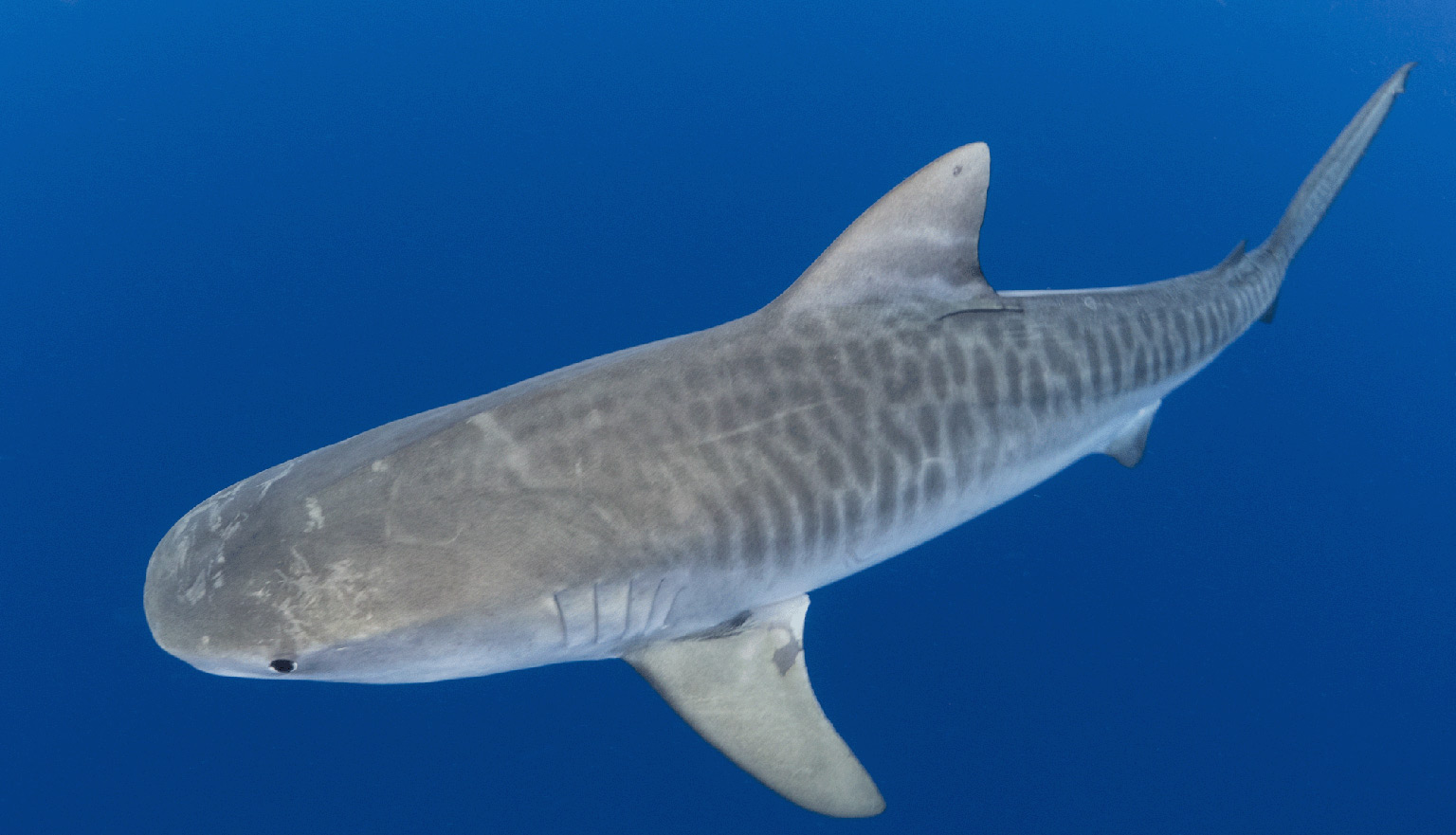Geneticists have identified new groups of tiger sharks to protect
Nov 30, 2021
- New genetic studies revealed at least two distinct groups of tiger sharks in the Atlantic and Indo-Pacific ocean basins, plus a third smaller population near Hawaii.
- These results are a mild surprise, due to the versatility and long swimming ranges of tiger sharks.
- Fisheries managers should take precautions to protect these distinct genetic populations, researchers urge.
Tiger sharks sometimes swim thousands of kilometers—far enough to move among oceans. Their flexible diets and adaptable behaviors set them up to be successful jet-setters, zipping around the world and mingling with far-flung members of tiger shark society.
But new research shows that tiger sharks from different ocean regions aren’t as chummy with one another as expected. In fact, tiger sharks in the Atlantic and Indo-Pacific basins have diverged into at least two genetically distinct groups, according to a recent report in the Journal of Heredity.

A team of scientists from the Save Our Seas Foundation’s Shark Research Center at Nova Southeastern University in Dania Beach, Florida, compared the genomes of 242 tiger sharks from 10 locations around the world. The authors, led by marine biologist Andrea Bernard, analyzed small genetic markers scattered throughout the tiger shark genome.
Their results exposed many contrasting markers between Atlantic tiger sharks and their Indo-Pacific counterparts. The researchers anticipated some differences based on their preliminary analysis of these sharks in 2016, but they found even more variation than expected.
“If this differentiation continues over time, these groups will be on their way to speciation,” said senior author Mahmood Shivji, director of the foundation’s Shark Research Center. “But they’re not there yet, at least in our opinion.”
Tiger sharks (Galeocerdo cuvier) are sleek, stripy apex predators that can grow more than 5 meters long. They aren’t picky eaters; their prey includes fish, turtles, seabirds, snakes, dolphins and other sharks.
Tiger sharks seem content whether they’re gliding through the open ocean, hunting in meter-deep water close to shore or cruising coral reefs. “I honestly can’t think of any other shark that does that,” Shivji said. But fishing bycatch and the fin trade have made these versatile predators a Near Threatened species, according to the IUCN.

Despite their long voyages, tiger sharks seem to be homebodies when it comes to breeding. “I’m not really shocked by the results,” said marine biologist Chris Lowe, director of the Shark Lab at California State University, Long Beach. Lowe noted that researchers still don’t know why tiger sharks travel so far or how climate change may affect their movements.
Scientists haven’t observed physical or behavioral distinctions between the Atlantic and Indo-Pacific populations, but they haven’t had reasons to look so closely. “Tiger sharks are just these big things with stripes on them,” Shivji said. “Why would anybody even think they might be two different groups?”
Now, ecologists have a reason to look for different traits or behaviors between the two groups. And conservationists can develop fishery policies to protect sharks in both populations.
A third group with more subtle variations also emerged: tiger sharks around the long chain of the Hawaiian Islands.
“Luckily, much of the Hawaiian archipelago is protected,” Shivji said. “But these tiger sharks don’t know that. They can travel huge distances and they’re getting well outside of the protective boundaries.”

Next, the group wants to perform whole-genome sequencing to get a better idea of how the shark populations differ. They also want to use the current analysis to compare tiger shark with their evolutionary cousins, like silky sharks or sandbar sharks.
Lowe said he looks forward to seeing this kind of global, high-resolution genetics study applied to other species. He believes it could inform fisheries management and conservation in the future.
“Tiger sharks have captured my imagination because phylogenetically they’re a real oddball,” Shivji said. Understanding the genetic origins of their idiosyncratic charm may make the importance of protecting them even clearer.
Citation:
- Bernard, A. N., Finnegan, K. A., Pavinski Bitar, P., Stanhope, M. J., Shivji, M. S. (2021). Genomic assessment of global population structure in a highly migratory and habitat versatile apex predator, the tiger shark (Galeocerdo cuvier). Journal of Heredity, 112 (6), 497-501. doi: 10.1093/jhered/esab046
Graycen Wheeler (@GraycenWheeler) is a graduate student in the Science Communication Program at the University of California, Santa Cruz. Other Mongabay stories produced by UCSC students can be found here.